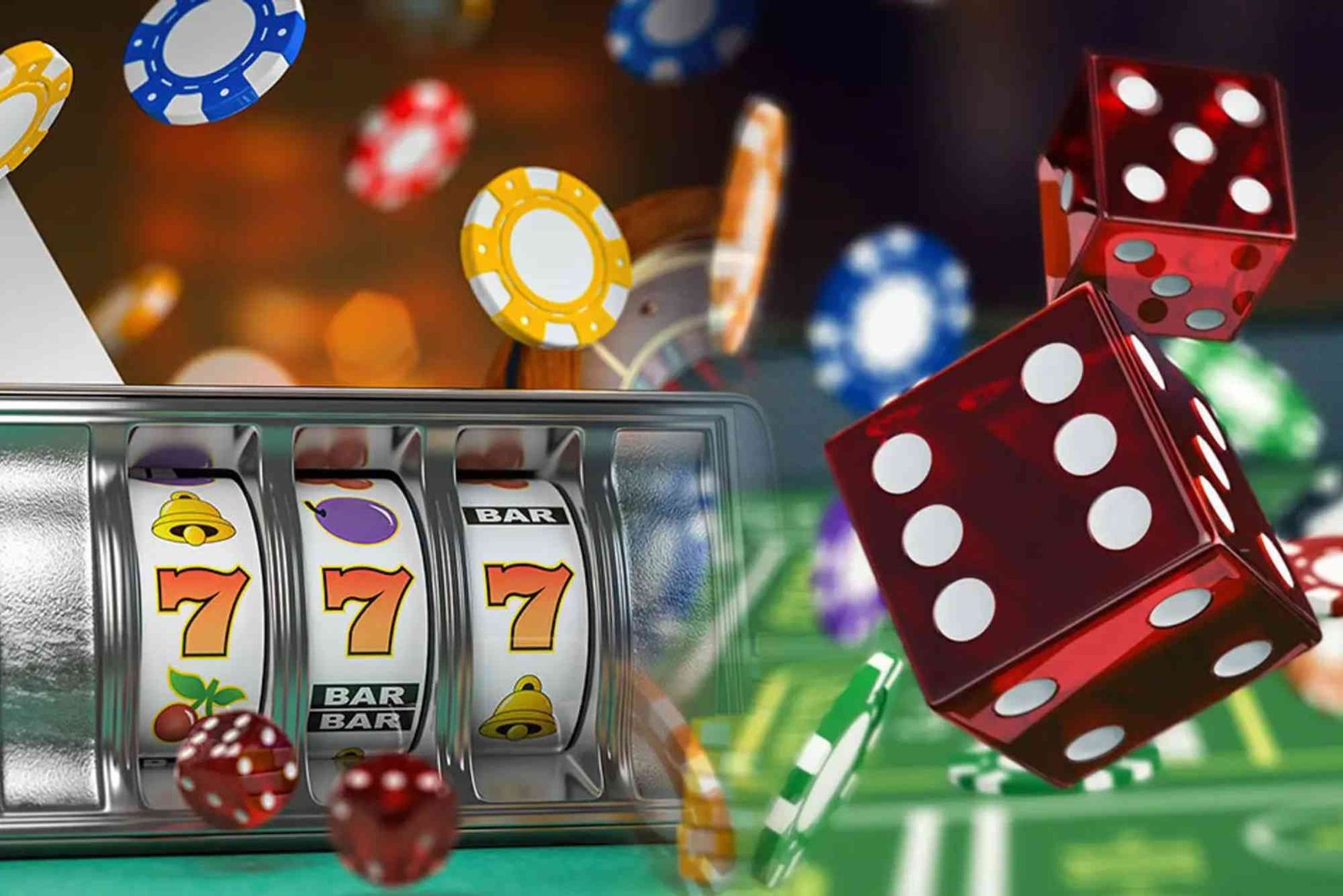If you’ve ever played a slot machine—whether at a traditional casino or in an online crypto casino—you’ve probably seen the jackpot meter slowly tick upward. It’s not just a flashy gimmick; that ever-increasing number is a central part of what keeps players engaged. But how exactly does it grow? What mechanisms are at play behind the scenes? And does it work differently in crypto casinos compared to traditional online platforms?
In this blog post, I’ll walk you through the inner workings of slot jackpot meters, the math and psychology behind them, and how the blockchain-based world of crypto casinos adds its own twist. Let’s dive into this fascinating fusion of technology, gambling, and behavioral design.
The Basic Concept of a Slot Jackpot Meter
To understand how a jackpot meter increases, we need to start with the basic structure of a slot machine—especially progressive slots. In progressive jackpot slots, a small portion of each bet a player makes is contributed to a pooled prize fund. This fund is the jackpot, and its total is displayed in real time on the meter.
This means that the more people play, and the more they bet, the faster the jackpot grows. If thousands of players around the world are spinning the same slot machine (or the same networked version of it), the contributions come in quickly, and that number on the screen can climb rapidly. It’s this mechanic that fuels the dream of winning life-changing money from a single spin.
The Math Behind Jackpot Growth
Let’s look at a simplified example. Suppose a slot machine has a return-to-player (RTP) percentage of 95%, and 1% of every bet goes toward the jackpot. That means if you bet $1, a penny goes to the jackpot fund. Multiply that by millions of spins happening across a network of online casinos, and it’s clear how that jackpot meter keeps moving.
Slot developers and casino operators determine the percentage contribution to the jackpot pool when the game is designed. Some allocate 0.5%, others 1% or more depending on the game’s volatility and payout structure. Importantly, this contribution does not directly affect your chances of winning on a spin—it only fuels the jackpot size.
In crypto casinos, this process is generally the same, but it gains an extra layer of transparency, which we’ll explore in a moment.
Networked Jackpots vs. Standalone Jackpots
There are two main types of progressive jackpots: standalone and networked.
Standalone jackpots are exclusive to a single machine or game instance. Only the bets placed on that specific game contribute to its jackpot. These jackpots grow slowly unless the game is incredibly popular.
Networked jackpots, on the other hand, are linked across multiple casinos or platforms. Every bet placed on any instance of that game contributes to the same jackpot pool. This is where things get interesting—and where you see those numbers reach into the millions.
When you play a networked jackpot slot at a crypto casino, your tiny contribution could be joining tens of thousands of others happening in real time across the globe. That’s why these jackpot meters often rise at an astonishing pace.
Jackpot Seeding and Reset Values
Here’s another behind-the-scenes fact: every jackpot has a “seed” value. This is the minimum amount that the jackpot starts at once it has been won and resets.
Let’s say a jackpot reaches $2 million, someone wins, and the meter resets. It doesn’t go to zero. Instead, it drops to a pre-determined value—maybe $100,000 or $500,000—depending on the game’s design. That amount is funded either by the casino or the game provider to keep the game attractive post-payout.
This ensures the game always has some excitement attached, even immediately after a jackpot has been claimed. For crypto casinos, these seed values are just as important, and often publicly verifiable thanks to blockchain transparency.
How Crypto Casinos Handle Jackpot Meters
With the rise of crypto casinos, the mechanics of progressive jackpots remain mostly the same, but the backend is where things differ—and in many ways, improve.
First, in crypto casinos, the use of blockchain technology allows for provably fair games. This means the game outcomes and contributions to jackpots can be audited in real time, giving players unprecedented trust in the fairness of the system.
Second, the use of cryptocurrencies enables instant micro-transactions. Because blockchain systems like Bitcoin, Ethereum, or Solana support fast, low-cost transfers, contributions to jackpot pools happen instantly and transparently. This can even allow new forms of gameplay, such as decentralized slots that use smart contracts to automatically update jackpot meters across platforms without central servers.
Third, the popularity of decentralized finance (DeFi) tools allows crypto casinos to offer community-based jackpots, where the pool might be partially funded by staking or yield-farming mechanisms. It’s an emerging trend that’s blurring the line between gambling and finance.
Some blockchain-based slot platforms even allow you to see the wallet address holding the jackpot funds. So you know exactly how much is in the pool and where it’s coming from. This level of transparency builds a unique trust environment that’s often missing from traditional online casinos.
Why Jackpot Growth Matters to Players
Watching a jackpot meter rise is a psychological trigger. It builds anticipation and creates what behavioral economists call “reward expectancy.” When a jackpot is large, more players are drawn to the game, creating a feedback loop: more players mean faster-growing jackpots, which in turn attract even more players.
This phenomenon is especially powerful in crypto casinos, where communities are tightly knit, and news of rising jackpots spreads fast across social media or blockchain analytics platforms. When a jackpot on a popular crypto slot crosses a certain threshold—say, 10 BTC—it’s not uncommon to see a spike in traffic to that game.
Can You Predict When a Jackpot Will Hit?
This is a common question, and the answer is almost always no. Jackpot wins are designed to be random. The growth of the jackpot doesn’t influence your odds of winning—it just means the prize gets bigger. Whether you hit it when it’s at $500 or $5 million depends purely on chance.
However, savvy players do pay attention to historical payout data, especially in crypto casinos where the blockchain may provide a full record of previous wins. Some players prefer to jump in when the jackpot is “overdue,” though this belief isn’t backed by statistical advantage—just human pattern recognition.
Final Thoughts: The Allure of the Climbing Meter
The rising jackpot meter is more than just a visual effect—it’s a brilliant piece of casino engineering designed to increase engagement, deepen immersion, and spark hope. Whether in traditional online slots or the innovative world of crypto casinos, this mechanic remains one of the most compelling aspects of the slot gaming experience.
For players, understanding how it works can make the game feel less mysterious—and perhaps a bit more strategic. While you can’t control when the jackpot hits, knowing how it grows might influence where and when you play.
In crypto casinos, where everything is recorded on-chain and trust is algorithmic, players can engage with these jackpot systems in a more transparent and sometimes more profitable way. The future of progressive slots is likely to see even more integration with blockchain-based systems, smarter pooling mechanisms, and even community-controlled jackpot games.
So the next time you see that number ticking higher and higher, you’ll know exactly what’s happening behind the curtain—and you just might be tempted to press spin, hoping you’re the lucky one to cash it all out.
Let me know if you’d like to pair this article with an image, infographic, or schema markup for better SEO results.




